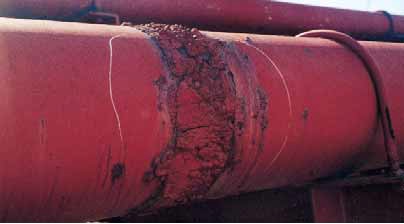
Piping system failure and countermeasures- Ships machinery space guideline
A ship's machinery space contains hundreds of metres of piping and
fittings. The various systems are arranged to carry many different
liquids at various temperatures and pressures.
Causes of pipe failure: Pipes have a hard life: they carry abrasive and corrosive fluids; they are exposed to atmospheric corrosion and to general wear and tear; they sometimes operate at extremely high temperatures. The most common cause of pipe failure is corrosion-induced weakness.
Causes of pipe failure: Pipes have a hard life: they carry abrasive and corrosive fluids; they are exposed to atmospheric corrosion and to general wear and tear; they sometimes operate at extremely high temperatures. The most common cause of pipe failure is corrosion-induced weakness.


